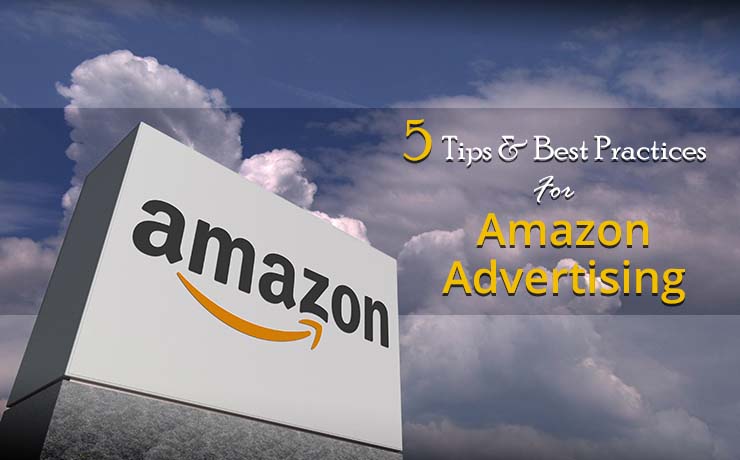
The popularity of Amazon in 2021 is undeniable.
It’s no surprise that Amazon has been growing rapidly even before COVID-19 hit. According to Statista, Amazon accounts for 45% of US ecommerce spending in 2019.
The pandemic pushed even more consumers online, contributing to an additional $105 billion in U.S. online revenue in 2020, and accelerating eCommerce by two years, Digital Commerce 360 estimates.
As more and more consumers are flocking to Amazon (for even the most frivolous purchases), it’s vital for advertisers to diagnose the health of their listings and ensure their Amazon Advertising campaigns are positioned to generate a high return on ad spend.
If you are not already advertising on Amazon, your business should consider it. Amazon has the potential to become a core advertising platform for many businesses and verticals, as well as a solid alternative to Google Shopping and Facebook Ads.
To help get started on Amazon, we’ve compiled this list of “definitely do’s”, things to avoid, as well as best practices to ensure your campaigns are successful.
Optimize Your Product Pages
Product Titles
Think of your product pages as the groundwork from which your advertising should be built from. You’ll need to build a solid foundation to ensure that users who are clicking on your ads will have a positive experience.
The product title is one of, if not, the most important elements of your listing. It is a best practice to create an informative, easy-to-read title that lets shoppers know key facts about your product. Product titles that perform best on Amazon are a happy medium between high volume keywords and vital information.
Product Images
Product imagery is another “make or break” factor for any product listing. Feature four or more high-quality, zoomable images in order to show your product from different angles and highlight important details. For increased interaction metrics and products that require demonstration, include a video as an option.
Product Reviews
A component often overlooked by many advertisers are customer reviews. A common mistake for sellers new to Amazon is directing paid-traffic towards a product with few to zero reviews. This will likely result in poor performance within your campaigns and potentially generate wasted ad spend. Amazon recommends advertising products with at least 5 or more customer reviews, plus a rating of 3.5 stars or higher.
Start With Automatic Targeting
Amazon campaigns offer several targeting options: automatic, manual and negative. We would recommend running a variety of campaigns together to increase the opportunity for your ads to show to customers and help discover which option works best for your products. With that being said, automatic targeting is by far the easiest and quickest way to begin this process.
Amazon’s algorithm will do the heavy lifting of matching your ads to keywords and products, helping you identify and “mine” those with highest ROAS and lowest ACoS. By adding the keywords and products you’ve mined from campaigns using automatic targeting to campaigns that use manual targeting, overtime, you’ll have greater control over the performance and results of your manually targeted campaigns.
Just make sure to exclude those keywords and products from your automatic campaigns once they have been added to your manual campaign, so that the algorithm may continue identifying new opportunities.
Organize. Organize. Organize.
In order to ensure you are running the most cost-effective campaigns, it is vital to have an organized campaign structure.
If your Amazon Advertising account is messy (i.e. lack of naming structure / mixed targeting objectives) you are running the risk of losing budget to irrelevant clicks. There are a number of ways to organize your Amazon Advertising campaign structure, but we would recommend the following:
- Campaign Type
- Bid Strategy
- Product Category / Brand
For example: An appropriate title for a Sponsored Product campaign that utilizes automatic targeting for a clothing retailer’s line of sneakers would be “Sponsored Products – Automatic Targeting – Sneakers”
Another example: The same clothing retailer has a Sponsored Brand campaign that utilizes manual targeting for their line of sweat shirts. If we are to follow the same structure an appropriate title would be “Sponsored Brands – Manual Targeting – Sweat Shirts”.
Leverage The Competition
A key methodology to apply to Amazon Advertising is not “reinventing the wheel”. There are millions of products on the Amazon Marketplace. No matter how niche your product may be, the chances are there are a number of sellers with similar products / listings. Instead of starting from scratch, take some time to gain insight into your competition’s performance and uncover new opportunities that can be easily implemented to your campaigns.
There are two main ways to discover competitor keywords – manually, or with the help of a reverse ASIN lookup tool. The manual route tends to be tedious and time consuming, which is why we would recommend using Helium 10’s Cerebro. Cerebro allows you to narrow your search for the most relevant data on a product’s keyword, such as volume, historical search data and the number of competitors ranking for the same keyword. This will significantly reduce trial and error by identifying the right keywords that have already worked for similar products.
Trim Fat with Negative Keywords
Similar to Google Ads, Amazon negative keywords are keywords that you exclude from a larger keyword search, to make sure you don’t rank for the wrong terms. For instance, if you are a clothing retailer who sells $20 sneakers, you will want to rank for searches of “sneakers” but not searches for “Air Jordan sneakers”.
Review your manual campaigns regularly and pause any underperforming keywords or product targets from the campaigns. A good rule of thumb is that if a keyword has spent more than 50% of its total order value, then the term should be paused and a new keyword should be added.
This is where your automatic targeting campaigns come into play. Review campaigns that leverage automatic targeting, identify high performing keywords and supplement them for the low performing keywords in the campaign using manual targeting.
Regularly “trimming the fat” and identifying new opportunities from your campaigns is a necessary step in any Amazon Advertising strategy.
Final Thoughts
By following these best practices and tricks, you can maximize the potential of your Amazon Advertising campaigns and drive consistency in your sales. This is all possible without a gigantic budget, you don’t need to spend thousands of dollars to start seeing results.
With the massive increase in size and popularity among shoppers, generating sales within the Amazon marketplace is more straightforward than ever. For sellers who want to gain exposure for their Amazon listings, leveraging customers through Amazon Advertising provides the best possible option.
If you would like some additional insight as to how you can improve the strength of your Amazon listings and grow your business in 2021, we at SmartSites can help! We utilize our years of digital advertising expertise and omni-channel strategic planning to identify the right solution to help you grow your business. Schedule a free discovery meeting to see how we can help you today!
 Free
Consultation
Free
Consultation Free
Google Ads Audit
Free
Google Ads Audit








